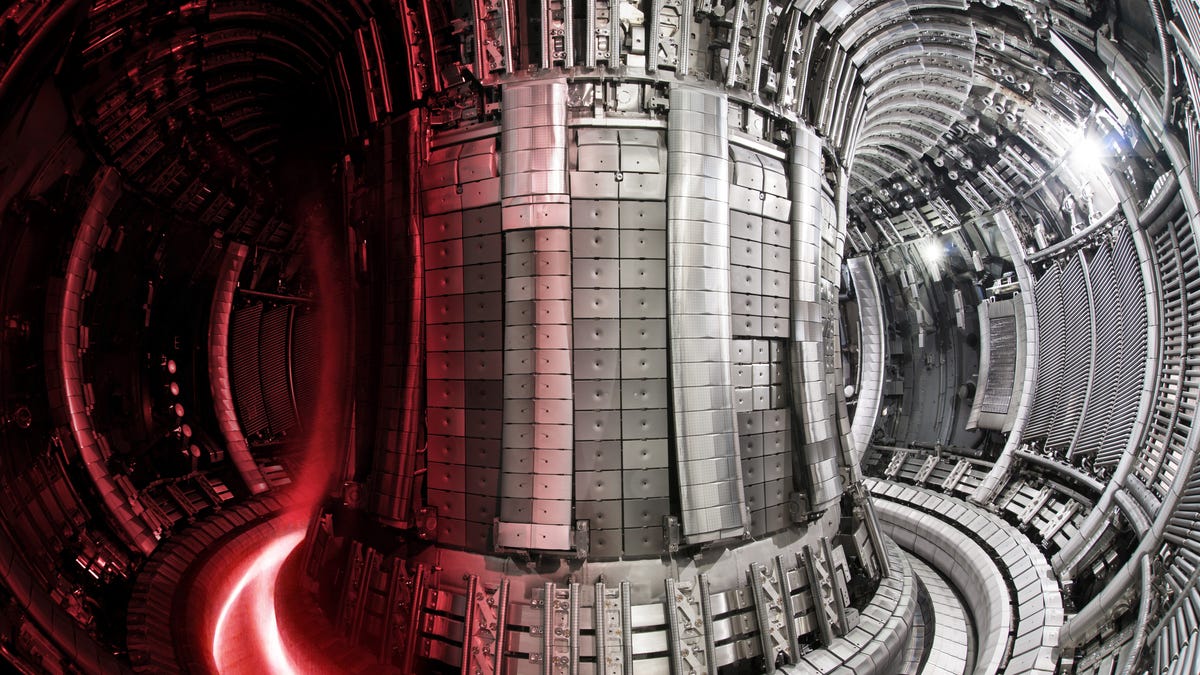New fusion record a step toward solving our energy and climate crises
Huge amounts of clean energy are closer than ever, but plenty of experiments still remain.

An artist's concept of JET in action.
Scientists have come closer than ever before to essentially creating a miniature sun inside a huge machine on Earth.
Experiments at the world's largest fusion reactor in Europe culminated in the announcement Wednesday that the Joint European Torus device set a record for generating power through fusion, which is the same process that ignites our sun. The breakthrough came on Dec. 21 when the JET produced a pulse of energy totaling 59 megajoules over five seconds.
That pulse is enough energy to power an average home for about half a day. It's also twice as powerful and a second longer than the previous record set by the same device in 1997.
"If we can maintain fusion for five seconds, we can do it for five minutes and then five hours as we scale up our operations in future machines," Tony Donné, manager of the EuroFusion program that has been running JET for four decades, said in a statement.
One planned future fusion machine is the International Thermonuclear Experimental Reactor (ITER) currently being built in France. ITER, which is expected to begin experiments in 2025, is similar to JET but on a much larger scale.
"For the ITER Project, the JET results are a strong confidence builder that we are on the right track as we move forward toward demonstrating full fusion power," ITER Director General Bernard Bigot said
Fusion power has been a holy grail of physicists and environmentalists alike for decades. Its promise is nothing less than abundant and clean energy that, in theory, could do wonders for the twin energy and environmental crises currently leaving very visible marks on populations, ecosystems and infrastructure around the world.
"It's clear we must make significant changes to address the effects of climate change, and fusion offers so much potential," UK Atomic Energy Authority CEO Ian Chapman said. "We're building the knowledge and developing the new technology required to deliver a low-carbon, sustainable source of baseload energy that helps protect the planet for future generations."
Another experiment using lasers at California's Lawrence Livermore National Laboratory was able to generate almost two megajoules over a tiny fraction of a second last year.
The major hurdle with fusion continues to be that it requires more energy to achieve than it produces. But Donné says net positive fusion could be coming soon.
"Crucially, the operational experience we've gained under realistic conditions gives us great confidence for the next stage of experiments at ITER and Europe's demonstration power plant EU DEMO, which is being designed to put electricity on the grid."

